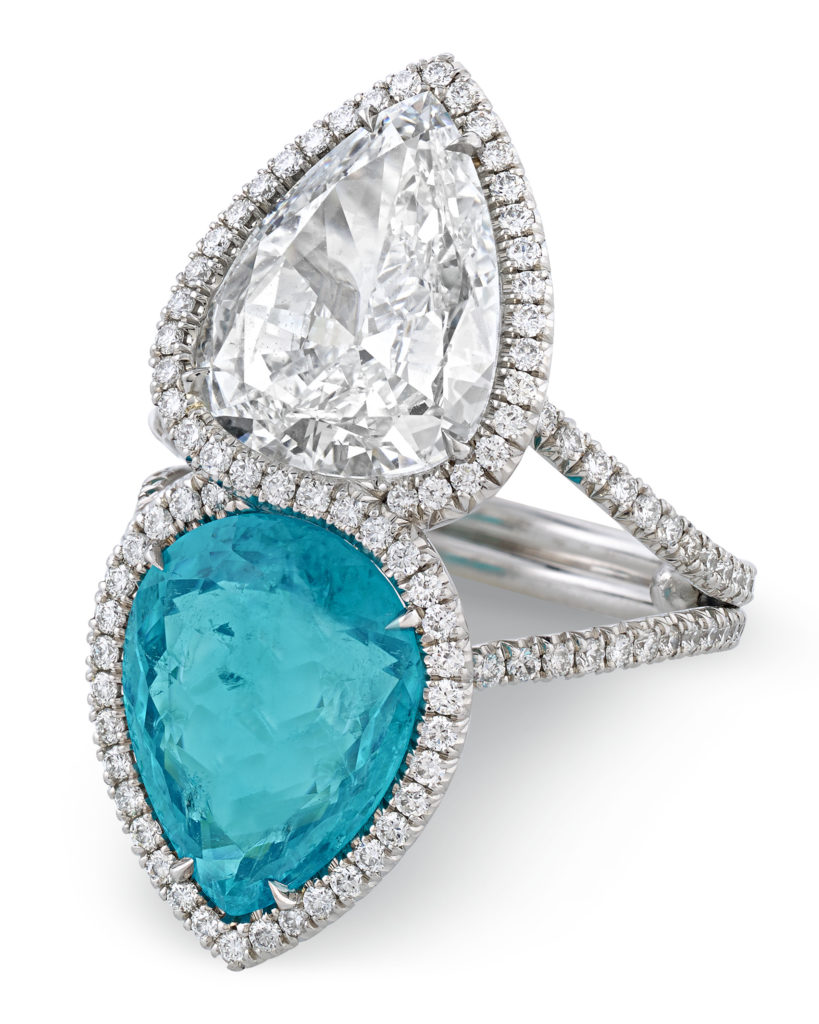It is a symbol of love, commitment and an image that is entirely synonymous with beauty, desirability, and brilliance: the diamond. From diamond brooches to a diamond necklace, diamonds are without a doubt one of the most recognizable substances in the world. Diamonds are known worldwide for their legendary reputation, flaunted by celebrities, coveted by ancient cultures, and worn as a ubiquitous symbol of commitment. While diamond rings can come in a countless amount of colors - gray, blue, yellow, green, pink, blue, brown, orange, and even red, white diamonds and estate diamond jewelry are truly are the epitome of elegance and allure.
But what exactly sets the diamond apart from all other gemstones? Read more to discover 5 fascinating facts that make diamonds the stars of the jewelry world.
They have been coveted for thousands of years.
Historical evidence proves that diamonds have been one of the most revered and collected minerals in the world. Documents dating back to the fourth century B.C. detail how diamonds were an exceptionally desirable good in India. Fast forward to the first century A.D., and Pliny the Elder, known Roman author and naturalist philosopher, quoted the diamond as being the most valuable item in the entire world. Ancient Hindus used diamonds as conduits for devotional statuses and other ancient cultures incorporated diamonds into their rituals – to bring courage, intelligence, and strength. It’s to no surprise, therefore, that the practice of revering and utilizing diamonds carried into the Middle Ages and far beyond into our present day.
They are all graded, examined and certified based upon the same scale.
Before a diamond even reaches a jewelry store, it already has inherent, specific characteristics that establish and determine its value. Because a diamond is a naturally formed mineral, no two diamonds are alike. Because of this, there exists a worldwide standard for diamond grading and evaluation to determine the value and rarity of white diamonds.
Chances are if you’ve ever stepped foot inside a jewelry store you’ve probably heard of it: The 4 C’s of white diamonds. Developed in the 1940s, this universal system was developed by the Gemological Institute of America (GIA) to meet the industry’s changing and developing needs in the diamond market. As the standard for diamond quality evaluation, the 4C’s are comprised of four quality factors: cut, clarity, color, and carat. Each quality factor maintains its own grading range. Once evaluated, the four grades for the white diamond in questions make up the gemstone’s overall evaluation.
Diamonds are extremely old!
How old exactly are diamonds? Scientists and geologists estimate that most diamonds can be anywhere from approximately 3.2 billion to 1 billion years old. In addition, specialists believe that diamonds have been forming throughout the entirety of earth’s existence.
The diamond is comprised of a single element – it is nearly 100% Carbon.
Diamonds are formed very deep within the earth, approximately 100 miles below surface in the upper mantle. In this location, there exists a very pressurized and hot environment – one which is necessary and ideal for a diamond to crystallize. In fact, the temperate at this level must be at least 2,000 degrees and the pressure must be at least 690,000 pounds per square inch. During their crystallization, diamonds are formed of carbon atoms which, with time, bond together and grow crystals. While there are still some questions left to be answered, such as why there exists carbon atoms at this level of the earth, we do know that a diamond is made up of billions and billions of carbon atoms which have locked into place to form a crystal structure.

A 3.02-carat pear-cut type IIa diamond that is internally flawless
What is the derivation of the word ‘diamond’?
Where does the word “diamond,” come from? The word comes from the Greek word “adamas” which translates to “indestructible” or “invincible.” This name is entirely appropriate as diamonds are the hardest naturally occurring substance on the earth. In fact, the only thing that can scratch or alter a diamond is another diamond!
Want to learn more about diamonds? Read more to understand the specifics behind the 4 C’s of white diamonds and explore our collection of diamond estate jewelry.







